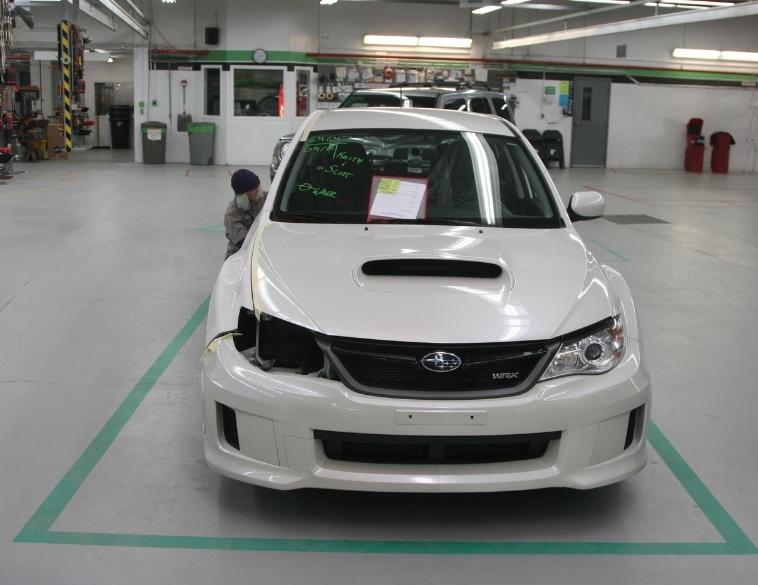Compressing timeframes and emphasis on repairs are critical to achieving throughput efficiency.
Efficient throughput is key to a collision shop’s success. Yet achieving it requires a thorough understanding of the processes required and the ability to execute them.
Andrew Northrup, Zone Director, CARSTAR, says that workable and sustainable throughput hinges on the ability to write effective estimates. “The days of writing a 15-20 minute ‘street sheet’ are gone,” he explains. “We need to schedule these vehicles in and prepare the customer for the time it requires to write a thorough estimate, which includes a partial dismantle, in order to have a smooth collision repair process.”
Organize to standardize
Domenic Prochilo, Vice President at Simplicity Car Care, notes that another key factor to achieving an effective sustainable throughput process is by having “an organize to standardize” approach to the process. “Maintaining an organized workplace makes it much easier to standardize processes from the front of the office to the back of the shop,” he explains. Additionally, by always focusing on compressing time frames from process to process, the result is very powerful says Prochilo. Some strategies for achieving this effectively include “compressing times frames in estimate lead time, cycle time accounts receivable and optimizing booth cycles.”
Collision centres today are under constant pressure to perform, with both operational and financial targets becoming tougher with each passing day. Throw in additional obstacles, such as supply chain and parts disruptions and the situation becomes even more challenging. That’s why we’re seeing more and more collision centres focus on a repair-first strategy. Executing it properly, however, requires some careful considerations. For example, significant investments in tools and equipment are needed. “Some of the tools that a shop should have to get the most out of a repair versus replace strategy are dent extraction tools and plastic repair tools such as nitrogen welders, bumper staplers, and allied product repair kits,” explains Prochilo.
Mitigating parts shortages
By making the required investments, and adopting a repair-driven mindset, Prochilo says a collision centre can find themselves being able to repair around 70% of all panels, helping mitigate the impact of parts shortages while at the same time decreasing cycle time and boosting overall profitability.
Another key factor collision shops need to consider is staffing. “Having staff readily available at all times is one key to sustaining throughput as business hits peaks and valleys,” explains Stu Klein, Technical Trainer with Fix Network. That being said, he notes that typically, industry profits don’t tend to be significant enough to maintain staff during low tide, which often leads to layoffs, something we saw during the COVID-19 pandemic. The trouble is, when business starts ramping up again, it can be difficult to attract the right people, particularly if the staff has been laid-off permanently. This is why good staffing plans are essential to achieving effective shop throughput. Otherwise, you can end up with expensive recruitment drives which further eat into shop operational efficiency and profits at a time when the business can ill afford them.
Klein also stresses the importance of emphasizing customer service and solid communication, particularly during uncertain times, when many factors are beyond a shop’s control. “We must clearly inform customers upfront of the challenges we face, what kind of delays they might expect, what we can and cannot do, and maintain regular updates. Let’s make sure the customers are satisfied with what we did within the reality of today’s market conditions.”



